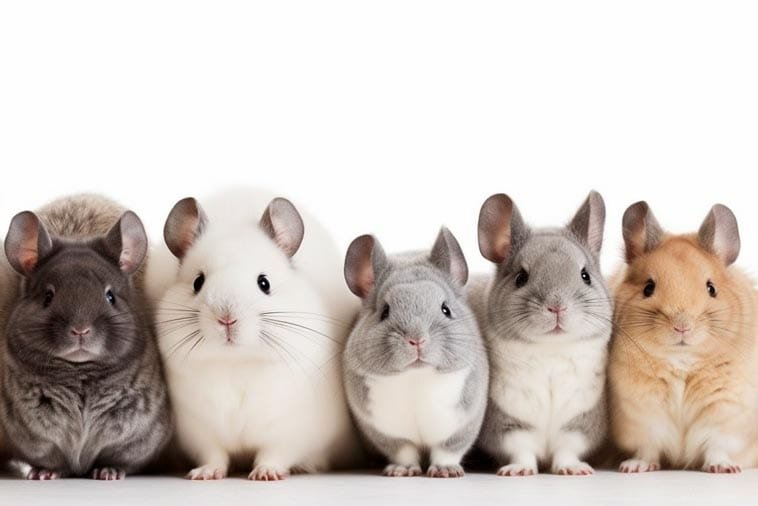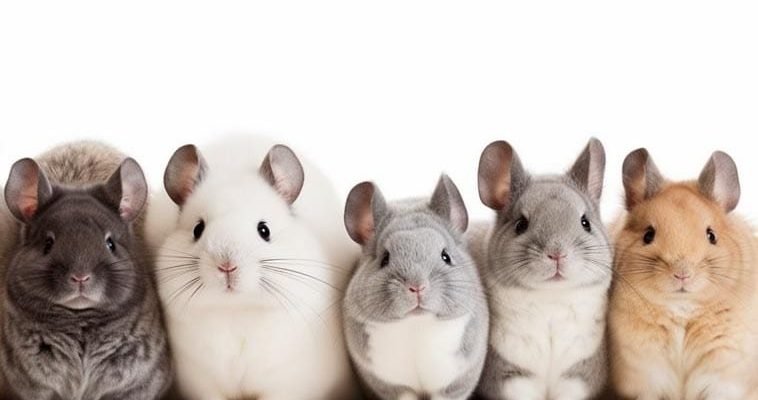
So, what makes the sapphire chinchilla so special? It all boils down to genetics, inheritance patterns, and a dash of dedicated breeding practices. Just like breeding racehorses or show dogs, responsible breeders work hard to ensure they produce healthy, vibrant animals with the desired traits. You might be wondering, what does this process involve, and how do these beautiful little creatures emerge from a complex web of genes? Let’s dive into the colorful world of sapphire chinchilla breeding and genetics.
Understanding Chinchilla Genetics
Chinchillas, like all living creatures, inherit traits from their parents. This inheritance is controlled by their genetic makeup, which is a combination of dominant and recessive genes. In simple terms, genes are the biological instructions that dictate everything from a chinchilla’s fur color to its temperament.
For sapphire chinchillas, the key player here is a specific mutation that affects their fur color. The sapphire gene is a recessive trait, meaning that a chinchilla needs two copies of this gene (one from each parent) to display the sapphire color. If they only have one copy, they won’t show it, even though they carry the gene. This is why understanding genetics is crucial for breeders—knowing how to combine the right pairs can help produce beautiful sapphire chinchillas.
Here’s a quick breakdown of chinchilla color genetics:
- Dominant Traits: Some traits are dominant, meaning only one copy is needed for the trait to be expressed.
- Recessive Traits: Recessive traits, like the sapphire color, require two copies to appear.
- Heterozygous vs. Homozygous: If a chinchilla has two identical alleles for a trait, it’s homozygous. If it has different alleles, it’s heterozygous.
By grasping these basic concepts, breeders can plan their breeding programs more effectively, aiming for healthy offspring with stunning appearances.
The Sapphire Gene: What Makes It Unique?
So, what exactly makes the sapphire chinchilla’s fur look the way it does? The sapphire gene is a mutation of the standard gray chinchilla’s fur color. This gene alters pigment production, resulting in that eye-catching, soft blue tone.
Interestingly, the mutation has a specific impact on the melanin production in the chinchilla’s fur. Melanin is what gives color to hair, skin, and eyes. In sapphire chinchillas, the mutation leads to a reduced amount of dark melanin, which in turn creates the lighter blue hue we admire.
The result? A beautiful, soft coloration that stands out in a crowd of other chinchilla colors, like white, black, or gray. Breeders often find this unique coloration highly desirable, making sapphire chinchillas sought after in the pet trade.
But here’s the kicker: because the sapphire gene is recessive, not all chinchillas will produce sapphire offspring unless both parents carry the gene. This is why responsible breeding practices are so crucial—breeders must ensure that both parent chinchillas have the sapphire trait to create a harmonious breeding outcome.
Breeding Practices for Sapphire Chinchillas
Breeding sapphire chinchillas isn’t just about selecting two pretty chinchillas and hoping for the best; it requires a good deal of knowledge and effort. Responsible breeders focus on health, genetics, and temperament to ensure that their chinchillas are not only beautiful but also thrive in their environments.
Here are some key practices to consider:
1. Genetic Testing: Many breeders conduct genetic testing to ensure that their chinchillas don’t carry any harmful traits that could lead to health issues in their young. This helps promote overall well-being in the breeding population.
2. Careful Pairing: Breeders need to pair chinchillas that both carry the sapphire gene. By doing this, they can maximize the chances of producing sapphire offspring.
3. Monitoring Health: Breeding takes a toll on chinchillas, so monitoring their health is essential. This includes proper diet, living conditions, and regular veterinary check-ups to prevent any potential issues that could arise during pregnancy and after the birth of kits.
4. Socialization: Raising well-adjusted chinchillas is vital. Breeders often spend time socializing their kits to ensure they are friendly and comfortable around humans, which makes them better pets in the long run.
These methods help create a responsible breeding environment where beautiful sapphire chinchillas can flourish.
The Importance of Ethical Breeding
Ethical breeding is an essential topic in the chinchilla community—and it’s really about responsibility. When breeding sapphire chinchillas, breeders must prioritize the animals’ health over profit or aesthetic appeal.
Many people jump into breeding without understanding the commitment it involves. Here’s why ethical breeding matters:
– Health: Animals bred in a responsible manner are healthier and have fewer genetic problems. This is crucial for the well-being of the chinchillas and reduces the chance of passing on undesirable traits.
– Temperament: Chin, like humans, have personalities shaped by genetics and environment. Ethical breeders focus on temperament as well as appearance, producing chinchillas that are not just stunning but also friendly and sociable.
– Sustainability: By practicing ethical breeding, chinchilla breeders contribute to the long-term health of the chinchilla population. This can help regulate the pet trade and prevent overbreeding or neglect.
Ultimately, being an ethical breeder isn’t just about producing pretty chinchillas; it’s about fostering healthy and happy pets that can thrive in homes for years to come.
Common Breeding Challenges and Solutions
As with any breeding practice, breeding sapphire chinchillas comes with its own set of challenges. Understanding these hurdles can help breeders navigate the complexities of chinchilla reproduction more smoothly.
1. Genetic Issues: Even with careful planning, unforeseen genetic problems can arise. Breeders should be prepared to deal with traits that may negatively affect the health or temperament of the animals. Genetic testing can help minimize these issues, but it’s not a foolproof solution.
2. Breeding Pair Compatibility: Not all chinchillas have compatible personalities. Some may not get along well, which can lead to stress during mating or after the birth of kits. Observing the interactions of potential breeding pairs beforehand can help identify any compatibility issues early.
3. Managing Temperature: Chinchillas are sensitive to hot temperatures, and breeding pairs should be housed in a climate-controlled environment to ensure their comfort. Newborn kits are particularly vulnerable, so maintaining a stable temperature is crucial during this time.
These challenges can be managed with proper knowledge and proactive care, allowing for a smoother breeding process.
Breeding sapphire chinchillas is a captivating journey that blends the science of genetics with a love for these remarkable animals. Understanding the nuances of their genes, ensuring ethical practices, and navigating breeding challenges can lead to stunning results.
As more people become fascinated with sapphire chinchillas, it’s crucial that breeders uphold ethical standards and prioritize the health and happiness of these lovely creatures. By doing so, they not only contribute to a thriving community of chinchilla enthusiasts but also ensure that these adorable pets continue to bring joy to many homes around the world.
Whether you’re a potential breeder or simply a chinchilla enthusiast, learning about their genetics and breeding can deepen your appreciation for these charming animals. After all, behind every beautiful sapphire chinchilla is a story written in their very DNA.

